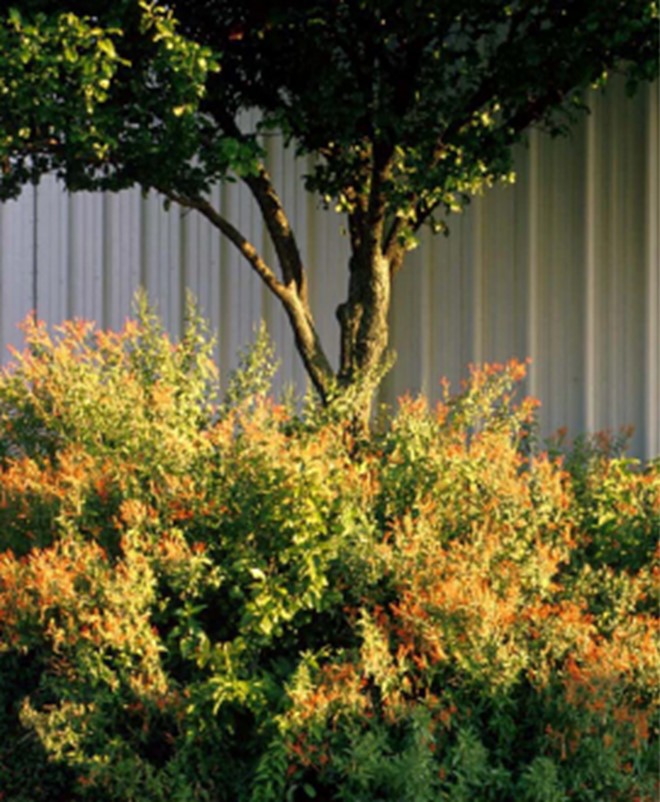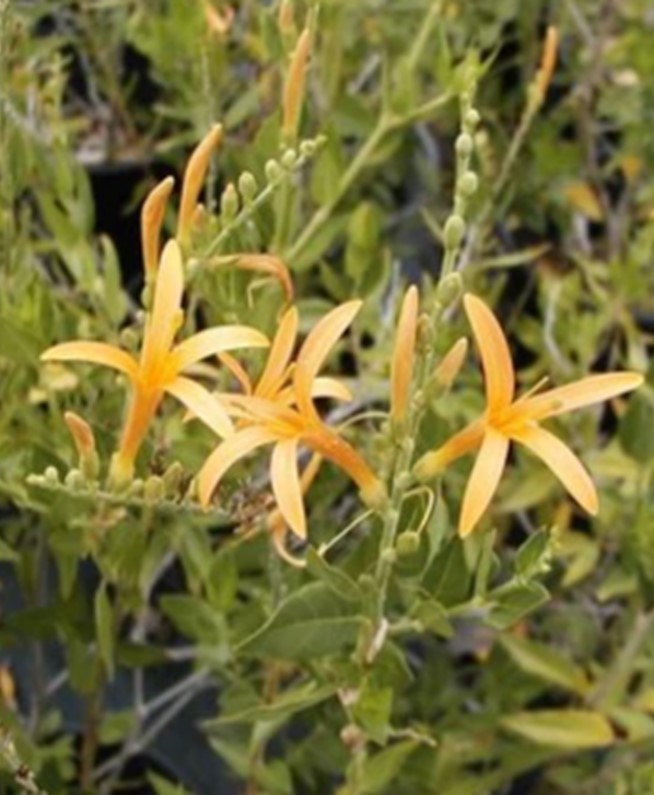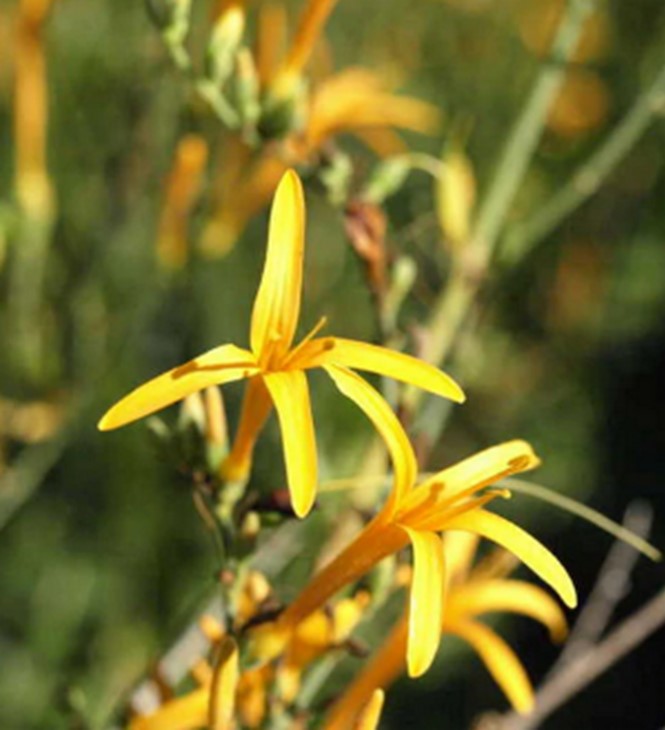Flame Acanthus ‘Benny’s Gold’
Anisacanthus var. ‘Benny’s Gold’



Characteristics
- Water: Dry
- Maintenance: Low
- Flower: Showy
- Attracts: Hummingbirds, Butterflies
- Other: Winter Interest
- Tolerate: Deer, Drought, Clay Soil, Shallow-Rocky Soil
- Texas Native
Culture
Flame Acanthus ‘Benny’s Gold’ grows best in medium to dry, well-draining soils in full sun, but is adaptable to many soil types including poor, rocky soils and heavy, clay soils. Tolerant of drought, and takes well to pot culture. Occasional but regular summer irrigation may be required in desert landscapes. Hardy from Zones 7 to 10. In the colder parts of its range, this plant will die back to the roots and reemerge in the spring with new top growth. Pruning is not required, but can be pruned for shape in the fall and cut back more severely every few years.
Noteworthy Characteristics
Anisacanthus quadrifidus var. wrightii, commonly called Texas firecracker, is an upright, deciduous shrub reaching up to 5′ tall and 4′ wide with an informal, spreading appearance. It is native to extreme south-central Texas and adjacent northern Mexico, where it is found growing on rocky, calcareous slopes and floodplains. The slender, brittle stems have attractive, peeling bark. The leaves are small, nearly clasping, and lanceolate in shape. Bright, 1 to 1½ inch long gold tubular flowers appear in abundance during bloom periods, which most often is from spring to late summer after rain. Extremely attractive to hummingbirds, butterflies, and other pollinators. Deer tend to avoid this plant.
The specific epithet quadrifidus means “divided into four”, possibly in reference to the four symmetrical petals of the flowers. The infraspecific epithet wrightii honors Charles Wright (1811-1885), an American botanist who chiefly collected in Texas, Hong Kong, and Cuba.
Problems
No known pest or disease issues.
Garden Uses
Informal hedge or specimen plant. Does well in mixed borders, containers, rock gardens, and xeriscaping.